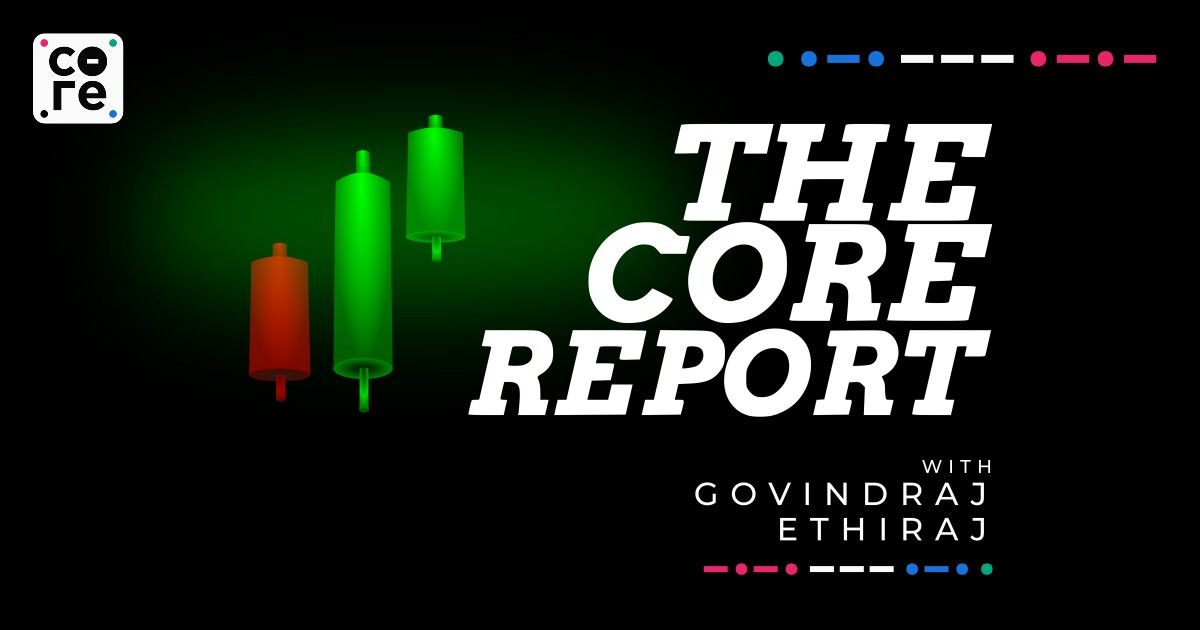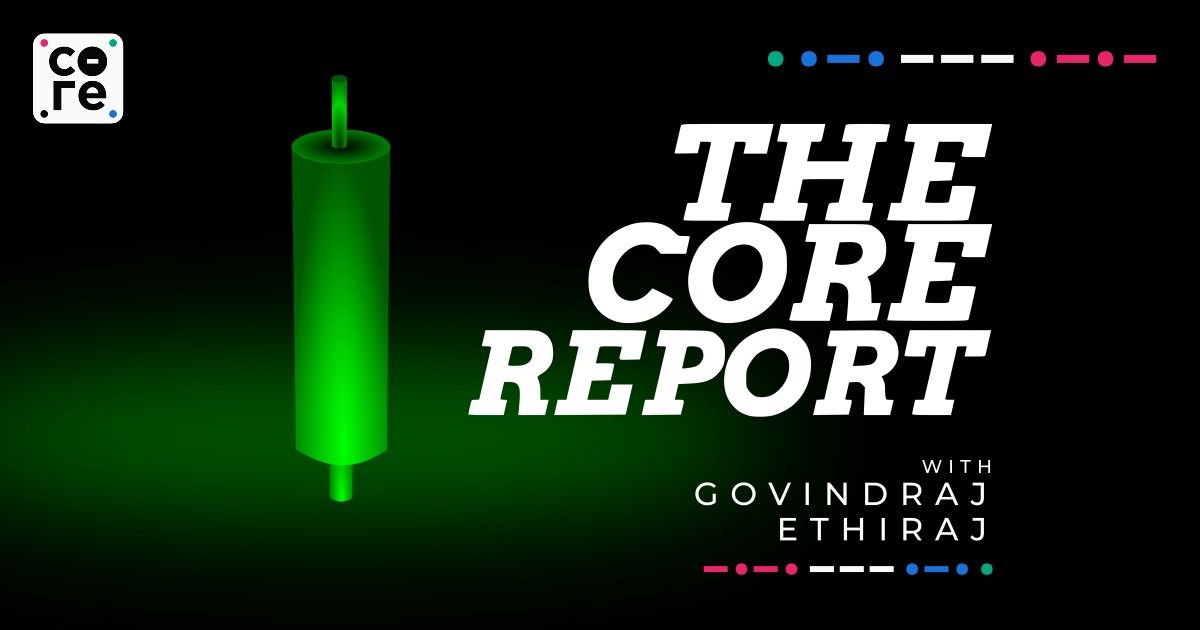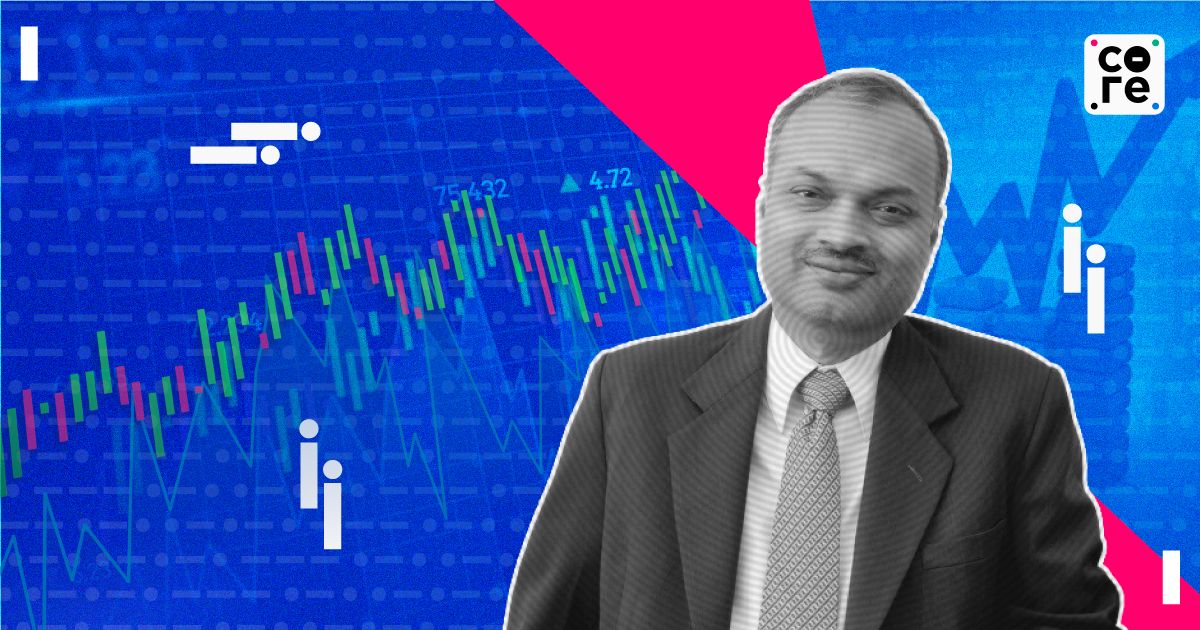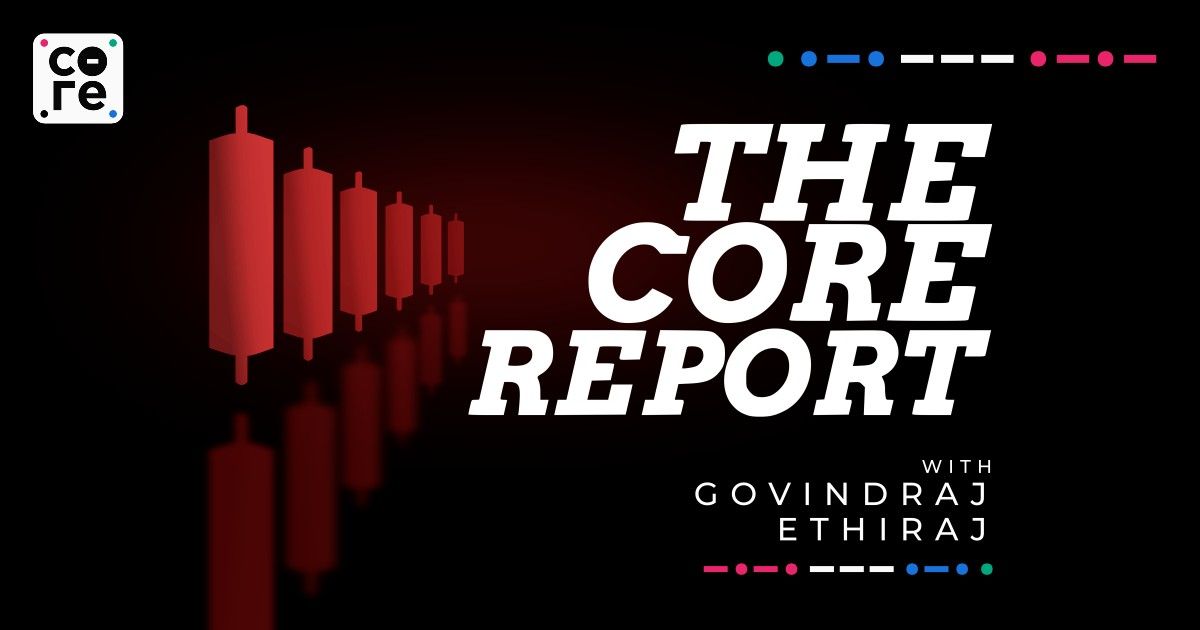On today’s episode, financial journalist Govindraj Ethiraj talks to CRISIL Chief Economist Dharmakirti Joshi.
Our Top Reports For Today
- (00:00) Stories Of The Day
- (01:00) Markets search for new asset classes to pile in, equities and gold hit record high
- (04:16) India leans on oil refiners to push rupee denominated trade.
- (05:51) Rating agency CRISIL predicts doubling of per capita income to $4,500 in 7 years.
- (15:02) RBI Governor now bats for 8% GDP growth for this year, see why.
- (16:20) Banks asked to let consumers choose Visa, Mastercard or other networks
NOTE: This transcript contains only the host’s monologue and does not include any interviews or discussions that might be within the podcast. Please refer to the episode audio if you wish to quote the people interviewed. Email [email protected] for any queries.
—
Markets Strong, Gold On The Run
The markets are moving in fits and starts but still scaling new highs saving a brief pause like yesterday.
And other asset classes are also zooming, like gold and we will come to that shortly..
The BSE Sensex which was hesitant for some part of Wednesday’s trading day edge up 409 points later to close at 74,086 while the NiftyF50 passed the 22,450 mark, awaited and watched by trackers for some time, to end at 22,474, up 118 points. Both Indices hit record highs during the day.
In percentage terms, the movement is about 0.5% in both benchmark indices but, as we have pointed out, before it’s a new peak every other day.
Interestingly, investors have begun selling NBFC stocks after RBI cracked down at least two of them, both for weak diligence among other misdemeanours on loans for IPO applications and loans against gold.
Of the 43 NBFC stocks with a market capitalisation of more than Rs 10,000 crore, 34 declined in Wednesday’s trade.
So who benefited ?
Well, some of the larger banks potentially because they are seen as safer and already quite tightly regulated. And then valuations might be looking better after the beating they have got in recent months.
It is quite clear that there is a systemic risk problem between investors’ exuberance and the willingness of intermediaries like non bank finance companies, among others, to find avenues for deployment or the capital to fund the exuberance itself.
The only hope like we discussed yesterday is that this is limited to some companies and not any outright fraud on small savers or investors, rather playing fast and loose with KYC norms, data sharing and so on.
Back in global markets, the wait for a cut in interest rates continues.
The US Federal Reserve still expects to reduce its benchmark interest rate later this year, however continued progress on lowering inflation to the two per cent target “is not assured”, Fed Chair Jerome Powell said on Wednesday, March 6.
Gold is a big surprise in a way. It began climbing in the last few days and has hit a record high of Rs 65,000 per 10 gm, tracking international prices which are also at all time highs thanks to continued expectation of monetary easing and geopolitical tensions.
There is also the fact that some traders are possibly bracing for an equity market correction and buying in anticipation.
Interestingly, high gold prices means demand for gold jewellery could slow as it has happened before.
The Business Standard reported that shares of gold jewellery stocks were under pressure and at least two stocks PC Jeweller and Palm Jewels were locked at the lower 5% circuits.
Other jewellery stocks fell too. Global gold demand fell 5% to 4,448 tonnes, said the World Gold Council, thanks to outflows in Exchange Traded Funds.
The RBI Leans On Oil Refiners To Pursue Rupee Dominance
The Reserve Bank of India has asked India’s state refiners to press Persian Gulf suppliers of crude to accept at least 10% of all payments rupees in the next financial year, Bloomberg is reporting adding the suppliers have been pushing back due to currency risk and conversion charges.
The larger objective is to promote the Indian rupee in international trade and reduce dependence on dollars. India imports some 85% of its crude oil requirements.
A few transactions have happened in rupees going by reports, including one by Indian Oil to Abu Dhabi National Oil Company for a shipment of million barrels last August but not since.
The reason is obviously sellers are wary of getting paid in a currency they are not able to do onward purchases with. Russia has publicly said in the past that it was sitting on more rupees than it could manage.
Bloomberg also reported the RBI has asked the Indian refiners to bear part of the currency transaction charges, who in turn are apparently resisting the idea on the grounds it will erode margins..
While India has been pushing for rupees to be accepted, the efforts usually meet with resistance for the fairly obvious reasons, being the US dollar and Euro are stronger benchmark currencies.
On the other hand of course is the fact that India is the world’s third largest crude importer and forecast to be the leading driver of global consumption growth, including by the International Energy Agency (check).
Crisil Predicts Doubling of Per Capital Income to $4,500 Middle Income Status by 2031
India’s economy is set to witness significant growth, with projections indicating GDP growth of 6.8 per cent in the next fiscal year. This growth trajectory positions India to attain upper middle-income status by 2031, with the economy expected to double to USD 7 trillion, said ratings agency Crisil on Wednesday.
Fiscal 2031 will mark the year when India enters the club of upper middle-income countries with per-capita income rising to USD 4,500, Crisil said. At this level of income, obviously many things could change on the consumption side, which of course could be the reason why incomes are also going up.
As per World Bank definition, lower-middle income countries are those with per-capita income of USD 1,000-4,000, and upper-middle income countries are those with per capita income between USD 4,000-12,000.
Crisil’s India Outlook report released on Wednesday says the country’s economic progress will be supported by domestic structural reforms and cyclical factors.
“After a better-than-expected 7.6 per cent this fiscal, India’s real GDP growth will likely moderate to 6.8 per cent in fiscal 2025,” said the Crisil India Outlook report.
It said that the next seven fiscal years (2025-2031) will see the Indian economy crossing the USD 5 trillion-mark and inching closer to USD 7 trillion.
“A projected average expansion of 6.7 per cent in this period will make India the third-largest economy in the world and lift per capita income to the upper-middle income category by 2031,” Crisil said.
India, with a GDP size of USD 3.6 trillion, is currently the fifth largest economy in the world, after the US, China, Japan and Germany.
Crisis also feels India’s manufacturing sector is at a sweet spot due to high capacity utilisation across key sectors and opportunities from global supply-chain diversification, thrust on infrastructure investment, the green-transition imperative and strong balance sheets of lenders. This in turn could lead to the share of manufacturing in India’s GDP going beyond 20% in fiscal 2031. A rise in manufacturing share is of course a holy grail of sorts.
I reached out to Crisil Chief Economist Dharmakirti Joshi and began by asking him to explain the significance of the report’s name: Growth Marathon, emerging sectors, investment, efficiency gains, priming India’s mid-term pace.
—
RBI Governor Bats For 8% Growth
Meanwhile, the growth sweepstakes seem to get bigger every subsequent quarter.
The Indian economy is likely to grow at a rate exceeding the Central government‘s Second Advance estimate of 7.6 per cent in the ongoing financial year, Reserve Bank of India governor Shaktikanta Das said on Wednesday.
“I would not hesitate to say that India’s GDP growth in FY24 will exceed 7.6%, it might be closer to 8%,” he said in an interview to ETNow.
Governor Das’ similar predictions, including on inflation, have in the past come close to the final number suggesting at least to me he is looking at some numbers or the construction of it that some of us may not be.
Reaffirming the forecast made during the Monetary Policy Committee’s February meeting, Das said he believes India may grow at 7 per cent in the next financial year, i.e., FY25 as well, Das said.
Das expressed confidence in the numbers for the current quarter, saying that India’s growth could be closer to 8% this year.
“The implicit growth for the Q4 is 5.9%. Our sense and understanding of the high-frequency indicators and the momentum of economic activity tells us that this 5.9% could be exceeded and when that happens, growth will be more than 7.6%,” Das said.
Credit Cards
The Reserve Bank of India has said credit card issuers like banks will have to give an option to customers to choose from networks like Visa or Mastercard at the time of the card’s issuance rather than the pre-fixed way in which it is currently sold. The RBI also set a 6 month deadline for the same, Reuters is reporting.
Issuers of credit cards cannot enter into any arrangement or agreement with card networks that restrain customers from availing the services of other networks, the RBI said, adding issuers with less than 1 million active credit cards are exempted from the requirement, while those who issue cards on their own authorised network are also excluded.
Networks of American Express, Diners Club International, Mastercard, Visa and homegrown RuPay provide services to customers in India, but the provider is usually determined by the bank depending on the card issued.
“We have seen the latest RBI circular on arrangements with multiple card networks for issuance of credit cards. We support the regulator’s efforts at enhancing choice for cardholders,” Mastercard told Reuters.
“Currently, customers are required to send a letter to ask for a switch in the card network,” a banker with a private bank said.
HDFC Bank, State Bank of India and ICICI Bank, have roughly 20%, 19% and 17% market share in terms of number of credit cards followed by Axis Bank at 14%. In value terms, HDFC has almost 26% of the market.





